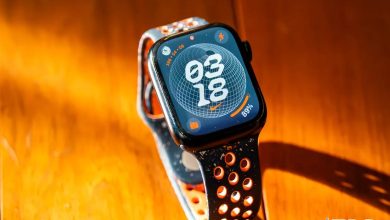This EV lets you add buttons if the touchscreen dashboard is too futuristic for you

THROUGH THE LOOKING GLASS: Touchscreens in cars are a double-edged sword. While they offer sleek aesthetics and the ability to update software features easily, they can also be a significant distraction for drivers, requiring you to take your eyes off the road to poke around trying to get things done – which is far from ideal when you’re hurtling down the highway at 70 mph. This EV lets you add buttons if the touchscreen dashboard is too futuristic for you
You can read more Technology articles
While many American automakers continue to offer buttons for crucial functionality, most Chinese car makers have given up on them entirely, replacing them with massive touchscreen panels that sometimes occupy most of the dashboard upfront. Xiaomi’s recently launched SU7 sedan is not spared from the trend either and boasts a huge 16.1-inch 3K panel. There’s one thing the brand is doing different though.
Recognizing that a “one size fits all” solution may not resonate with all customers, the smartphone-turned-automaker made a smart move: offering buyers the option to add a detachable row of physical buttons below the touchscreen.

It’s a nifty accessory that allows users to easily control functions like temperature, audio, and more with the satisfying tactility of good, old-school buttons. For those who find excessive touchscreen interactions distracting or cumbersome while driving, it’s such a great option and we only wish more automakers offered accessories like it.
After all, studies have shown that fiddling with touchscreen controls can divert a driver’s attention from the road for dangerous lengths of time – anywhere from 5 to 40 seconds in some cases. With no tactile feedback, drivers may also find themselves glancing down repeatedly to ensure commands have registered correctly.
hese issues haven’t gone unnoticed by regulators. In fact, the European New Car Assessment Programme (NCAP) will be updating its rating criteria in 2026, mandating that certain critical controls like the horn, turn signals, and hazard lights have dedicated physical buttons or switches for top safety scores.
While the SU7 isn’t slated for European markets (at least not yet), NCAP’s move underscores the potential hazards of ditching buttons altogether in favor of touchscreen interfaces.
Xiaomi’s tailored approach allows it to cater to diverse preferences. Beyond the clever button bar, the SU7 can be kitted out with an array of other nifty accessories – from fragrance diffusers to side light bars and even outdoor Bluetooth speakers.
With such an interesting array of accessory options, it’ll be interesting to see what extra goodies Xiaomi cooks up for the SU7’s upcoming 1,548hp “Ultra” hyper-performance variant.
Given just how insanely quick this model is – we’re talking a 217 mph top speed and a mind-boggling 0-100km/h (0-62 mph) time of 1.97 seconds – keeping your eyes firmly planted on the road will be crucial. Heck, at those speeds, fumbling around with a barrage of touchscreen menus and submenus to simply change the radio station or cabin temperature is pretty much courting disaster.This EV lets you add buttons if the touchscreen dashboard is too futuristic for you
Follow HiTrend on X





